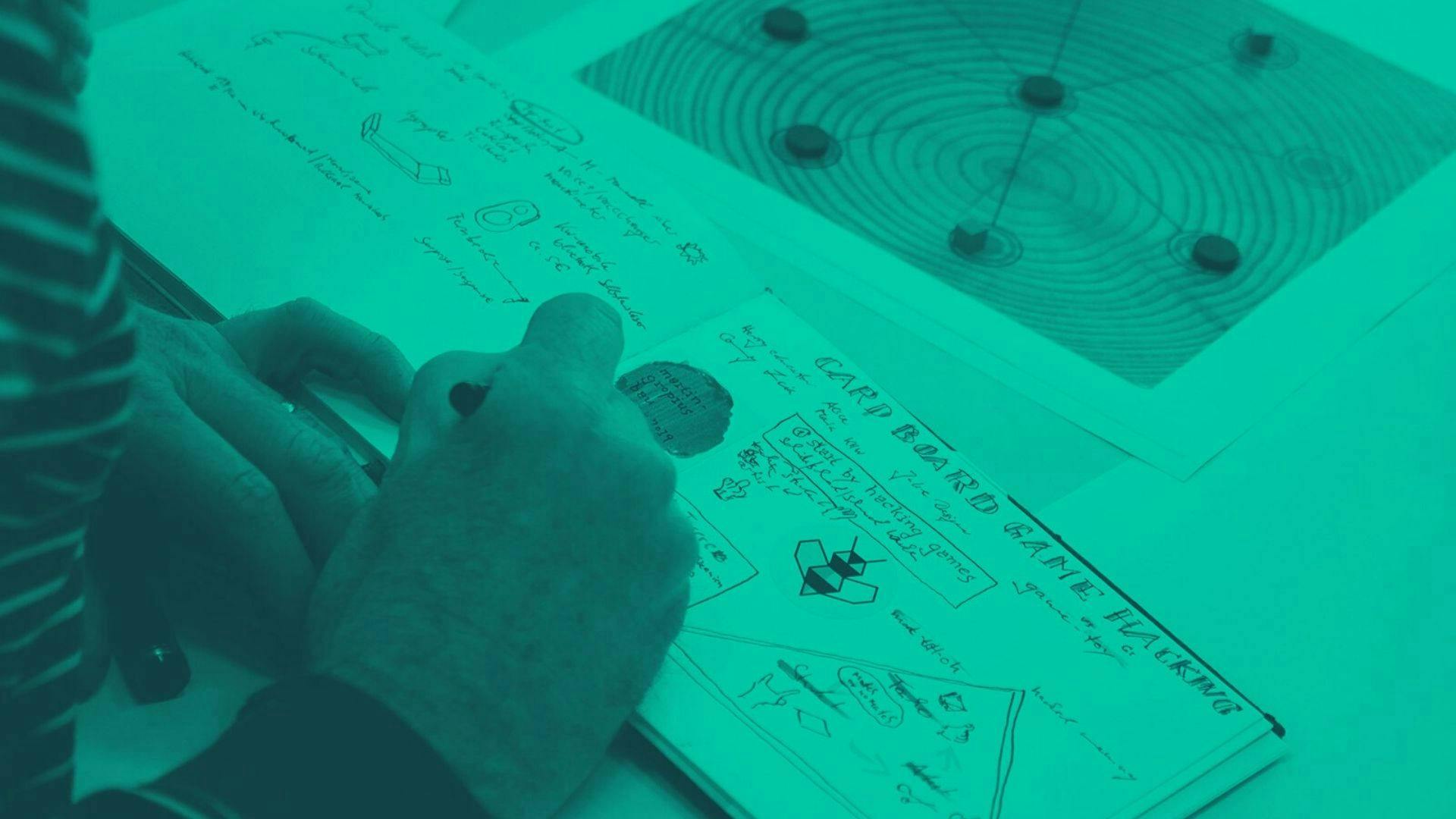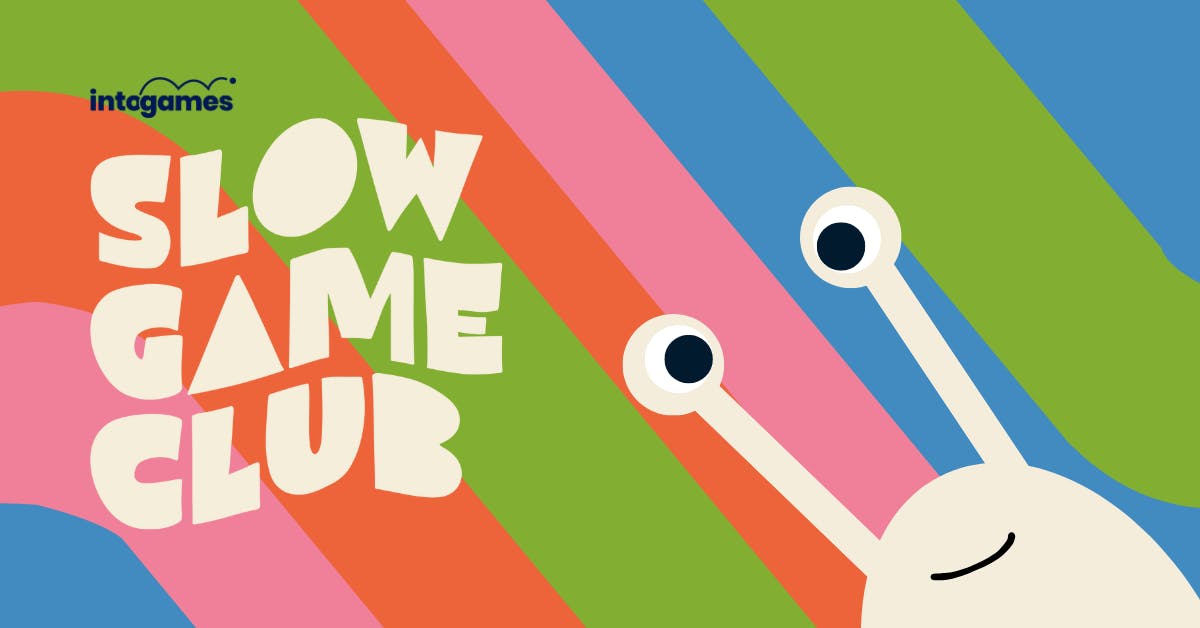
22 June 2020
How to generate amazing ideas for games...

So you want to make a game? That’s great! Maybe you have hundreds of ideas bubbling around in your head, or maybe you can’t think of anything to get started. Perhaps you are worried your idea isn’t ‘good enough’ or ‘right’. Below are some practical steps to help you generate and refine game concepts.
Get started right now
Grab a pen and paper or even better, get a notebook (so you can have all your ideas in one place) and some different coloured pens. Here is our four-step approach to get you started:
Step 1:
Generate a basic idea with this formula: Adjective (describing word) + Genre (a type of game) + environment (the place) + setting (the world it’s in) = the foundation of a game idea.
For example, you could have
A Happy (adjective), Action Game (genre) based in a Supermarket (environment) in the Future (setting)
OR
A Scary (adjective), RPG Game (genre) based in an English village (environment) in a parallel dimension (setting)
Here is a list of different game genres and here is a list of common adjectives. We also suggest you try and combine genres to make things even more interesting, eg. A Puzzle/Platformer game.
Step 2:
Make a Mind Map with the Five-Fold Framework - Once you have a game theme and setting, it’s time to expand on the details. Write your idea from the last step in a big bubble in the centre of a blank piece of paper. Then from that bubble (in different colours if you have them) draw 5 bubbles around it and write in the following words: Goal, Space, Components, Mechanics, Rules. From each bubble, draw out whatever you think about when connecting this area to the main theme. Here is a little more explanation of each:
- Goal: The purpose of the game (or how you win)
- Space: Details about the environment and setting (eg. backstory, materials, world feel and look)
- Components: All the different pieces of the game (eg. characters, monsters, tokens)
- Mechanics: Things you can do in your game (eg. jump, run, talk, different powerups)
- Rules: What you can and can’t do in the game (eg. take turns, hold 5 things, no gravity)
Once you have finished your mind map, you should have a good idea of how your game is going to take shape. This is a very simple version of what professional game makers call a Game Design Document or GDD for short.
Step 3:
Make a paper prototype. You can start sketching out characters and environments for your game straight away. Create parts of your game with pen, paper and tokens, and play it through with some friends or family. The main thing you want to find out is if your idea is fun. The process will also often bring up questions from players, or holes in your design that you didn’t think of, which is great to address early in the design process.
If the idea isn’t fun, don’t see this as a failure! It is all part of the process, and this is a really good time to discover this and go back and try something different!
Check out the Into Games board game workshop to help get your ideas flowing.
Step 4:
Don’t get too attached to your ideas. The key here is to have LOTs of concepts that you can refine later. Ideas don’t run out, so don’t be precious about them.
See later in this post for tips on trimming down your ideas to finding the ones you want to expand on.
Other Ideation Methods...
Use a game idea generator. If you are still having trouble coming up with a game idea, use these online tools for some inspiration:
- BAFTA Game Idea Generator
- Orteil’s Game Idea Generator
Feel free to refresh a few times until you get something you like, or combine together some of your favourites.
Think about games that you have played in the past which you have really enjoyed - Think about what you liked about them. Was there a particular mechanic in the game that made it feel really fun? A story that made you laugh? Or a character you could relate to? Take inspiration from that game and use it to help generate ideas for yours.
Think about things you like to do and how you could make them into a game - Do you like baking, knitting, tinkering, or Learning languages? How would you make something you enjoy doing day to day into a game? What rules would you add? How would you win?
Keep an idea book - Carry a notebook around with you, or use a note-taking app on your phone, so you can write down ideas at any time. You never know when inspiration will strike, so be prepared and write things down while you remember! Just as a photographer carrying around a camera starts seeing the world in photographs, you might start seeing the world in game ideas!
Mess with existing mechanics - If you get really stuck, take an existing game and change some of the rules a little until it becomes something new. For example:
- Battleships, but you can move undamaged ships
- Tic-Tac-Toe, but you can use a move to extend the board
- Combination Man/Exquisite Corpse, but you tell a story rather than draw a picture
Use a random page on Wikipedia - use this special link that finds you a random page from Wikipedia (note: searches ALL of Wikipedia) and use that as the starting point of your game.
Magazine word search - take some newspapers or magazines you don’t want to read any more and cut out words or images from different pages. Put them all in a hat, and pull out some at random. Whatever they form should be the starting point of your game.
Story Cubes - If you are thinking of making a more story-driven game, and you or your siblings have some Story Cubes lying around at home, these can be a great way to get ideas flowing for your game.
Pinterest search - Pinterest is a way for people to make collections of images that inspire them. Try searching for words around the game theme on Pinterest to see what inspiring collections people have made around the words. Make your own board to save the images you like the most!
Take a break! - Although it might sound counter-intuitive, sometimes it is a really good idea to take a break if you are really stuck. Your mind processes ideas when you are not actively thinking about them, so having a walk outside or getting a snack can sometimes give it the boost it needs to come up with that amazing idea!
Refining ideas
Now that you have LOADS of ideas we want to give you a way of trimming down that list to help provide you with a bit more focus.
Prototype, iterate and test
How do you know if an idea is good? Prototyping and iteration is the best way to quickly see if the amazing idea you think you have is actually amazing. Game Designer Jesse Schell came up with the idea of ‘The rule of the loop’ which simply says the more times you test and improve your design, the better your game will be. This means the faster you can prototype, play, get feedback, improve, and repeat, the better your game will become.
Your pitch
Write a single sentence about your game and why people should be excited to play it.
Look at your idea through a game design lens
Jesse Schell also helped develop a helpful tool called the ‘Deck of Lenses’ which you can use to look at your game idea from many different perspectives and make you think about it in different ways. You can find the digital deck of lenses here along with instructions on how to use the cards. There is also an iPhone and Android app!
Name your game
Keep it simple, clear and descriptive. Write down up to 5 ideas, and then choose the top one you or your team think is the best.
Think about Scope
Everyone, when they make their first games, will massively over-estimate how much they can get done in the time they have. Try to break your ideas down into small chunks, and prioritise your tasks. That way you will get a sense of achievement each time you finish a small piece. Get something very small finished and working, and then add on to that so you will still have something to show for your effort
Take part in a game jam!
Game jams can be a great way to force you to come up with and create your ideas quickly in a short amount of time, as they normally last between 24 - 72 hours. You can do these on your own, with friends, or even online!
Join the Into Games jam, Side Quest
Final tips
Some final things to keep in mind before you dive into your game-making:
- Reminder: SCOPE! After having lots of ideas, be prepared to throw most of them away! This might sound horrible, but you can always make more games! (write down the ones you didn’t get to in your game idea book).
- REMEMBER: the more games you try and make, the more and more ideas you will get. Make your ideas, scope, and game-making time frame small, and do it as often as possible.
- REMEMBER: there are no bad ideas. Mario is about a plumber who eats mushrooms to get bigger. Worms is about some… worms with rocket launchers. Katamari Damarcy is about a ball that rolls around and gets bigger when it picks things up. There are no bad ideas.
- If all else fails, make it funny.
For more inspiration, see:
- Loads more great tips on how to come up with ideas for games from Grrl games.
- Previous Ludum Dare (a big online game jam) themes to get inspired
Stay up to date
It's time to level up your inbox
Pick which newsletters you're interested in receiving, and customise further by specifying a discipline.
Join our mailing listTell me more






